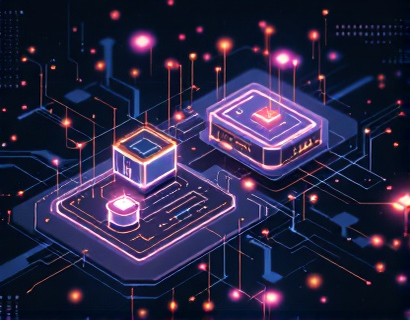Next-Gen Connectivity: Transforming Business and Personal Communication with Advanced Telecom and Internet Solutions
The rapid evolution of telecommunications and internet technologies has revolutionized the way businesses and individuals connect, communicate, and conduct operations in the digital age. This transformation is driven by advanced infrastructure and specialized software solutions that prioritize quality and customer satisfaction, ensuring reliable and efficient access to essential digital services. The impact of these advancements is profound, empowering users to navigate the modern digital landscape with unprecedented ease and effectiveness.
At the core of this transformation is the development of next-generation telecommunications networks. These networks leverage cutting-edge technologies such as 5G, fiber optics, and satellite communications to provide faster, more reliable, and wider coverage. 5G technology, for instance, offers peak data rates up to 20 Gbps, latency as low as 1 millisecond, and the ability to connect millions of devices simultaneously. This level of performance is crucial for applications that require real-time data processing and high bandwidth, such as autonomous vehicles, remote surgery, and augmented reality (AR) and virtual reality (VR) experiences.
Fiber optics, another cornerstone of modern telecommunications, uses glass or plastic fibers to transmit data as light signals. This method offers significantly higher bandwidth and lower signal loss compared to traditional copper wires, making it ideal for high-speed internet and enterprise-grade connectivity. Fiber-to-the-home (FTTH) and fiber-to-the-building (FTTB) deployments have become increasingly common, bringing ultra-fast internet to homes and businesses across urban and rural areas. The widespread adoption of fiber optics is transforming the digital infrastructure, enabling seamless streaming, cloud computing, and other data-intensive services.
Satellite communications, while often associated with older technologies, have also seen significant advancements. Modern satellite systems, such as Low Earth Orbit (LEO) constellations, provide global coverage with low latency and high capacity. These systems are particularly valuable in remote and underserved regions where traditional wired infrastructure is impractical. LEO satellites can deliver high-speed internet access to areas that were previously cut off, bridging the digital divide and opening up new opportunities for education, healthcare, and economic development.
On the software side, specialized solutions are playing a pivotal role in enhancing connectivity and communication. Network management platforms, for example, offer comprehensive tools for monitoring, optimizing, and securing network operations. These platforms use artificial intelligence (AI) and machine learning (ML) to predict and prevent issues, ensuring continuous uptime and optimal performance. Network slicing, a key feature of 5G, allows operators to create multiple virtual networks on a single physical infrastructure, each tailored to specific use cases and requirements. This flexibility is essential for supporting diverse applications, from IoT devices to critical infrastructure systems.
Cloud computing is another transformative force in the realm of digital connectivity. Cloud services enable businesses and individuals to access powerful computing resources, storage, and applications over the internet, eliminating the need for on-premises hardware. This model not only reduces costs but also enhances scalability and collaboration. Cloud-based communication tools, such as video conferencing, instant messaging, and collaborative platforms, have become indispensable for remote work and global teams. These tools facilitate real-time interaction and information sharing, breaking down geographical barriers and fostering a more connected world.
The integration of Internet of Things (IoT) devices further amplifies the impact of advanced telecom and internet solutions. IoT devices, ranging from smart home appliances to industrial sensors, generate vast amounts of data that need to be transmitted and processed efficiently. Advanced telecommunications networks and cloud platforms provide the necessary infrastructure to handle this data flow, enabling smart cities, precision agriculture, and industrial automation. The seamless connectivity provided by these solutions ensures that IoT devices operate smoothly, enhancing productivity and efficiency across various sectors.
Security is a critical aspect of next-generation connectivity solutions. As the reliance on digital services grows, so does the need for robust security measures to protect sensitive data and prevent cyber threats. Advanced telecom providers and software solutions incorporate multi-layered security protocols, including encryption, firewalls, and intrusion detection systems. AI-driven security solutions can detect and respond to threats in real-time, providing an additional layer of protection. Compliance with industry standards and regulations, such as GDPR and HIPAA, is also essential to ensure data privacy and integrity.
The benefits of these advanced connectivity solutions extend beyond technical performance. For businesses, reliable and high-speed internet access is crucial for maintaining competitiveness and driving innovation. E-commerce platforms, for example, rely on fast loading times and seamless user experiences to retain customers and increase sales. Remote work has become a norm, and businesses need robust communication tools to support distributed teams. Advanced telecom and internet solutions enable businesses to operate efficiently, reduce operational costs, and expand their reach to new markets.
For individuals, the impact is equally significant. Access to high-speed internet is no longer a luxury but a necessity for education, entertainment, and social interaction. Online learning platforms provide students with access to a wealth of resources and courses, regardless of their location. Streaming services offer entertainment options that were once unimaginable, while social media platforms keep people connected across the globe. Advanced connectivity solutions ensure that these services are available reliably, enhancing the quality of life and fostering a more connected society.
The environmental benefits of advanced telecom and internet solutions should not be overlooked. Efficient network operations and cloud computing reduce the carbon footprint associated with traditional on-premises infrastructure. By consolidating resources and optimizing energy usage, these solutions contribute to a more sustainable digital ecosystem. Additionally, IoT devices can monitor and manage energy consumption in buildings and cities, promoting energy efficiency and reducing waste.
As the demand for advanced connectivity continues to grow, the telecommunications and internet industry must adapt and innovate. Investments in research and development are essential to push the boundaries of what is possible. Collaboration between industry players, governments, and academic institutions can drive the creation of standards and policies that support the deployment of next-generation infrastructure. Public-private partnerships can also play a vital role in addressing challenges such as spectrum allocation, infrastructure sharing, and universal access.
In conclusion, the transformative impact of advanced telecommunications and internet services is reshaping the way we live and work. By leveraging cutting-edge infrastructure and specialized software solutions, we can achieve reliable, efficient, and secure connectivity. This, in turn, empowers businesses to innovate and grow, while enhancing the quality of life for individuals around the world. As we continue to embrace these advancements, the future of connectivity looks brighter than ever, paving the way for a more connected and prosperous global community.










































